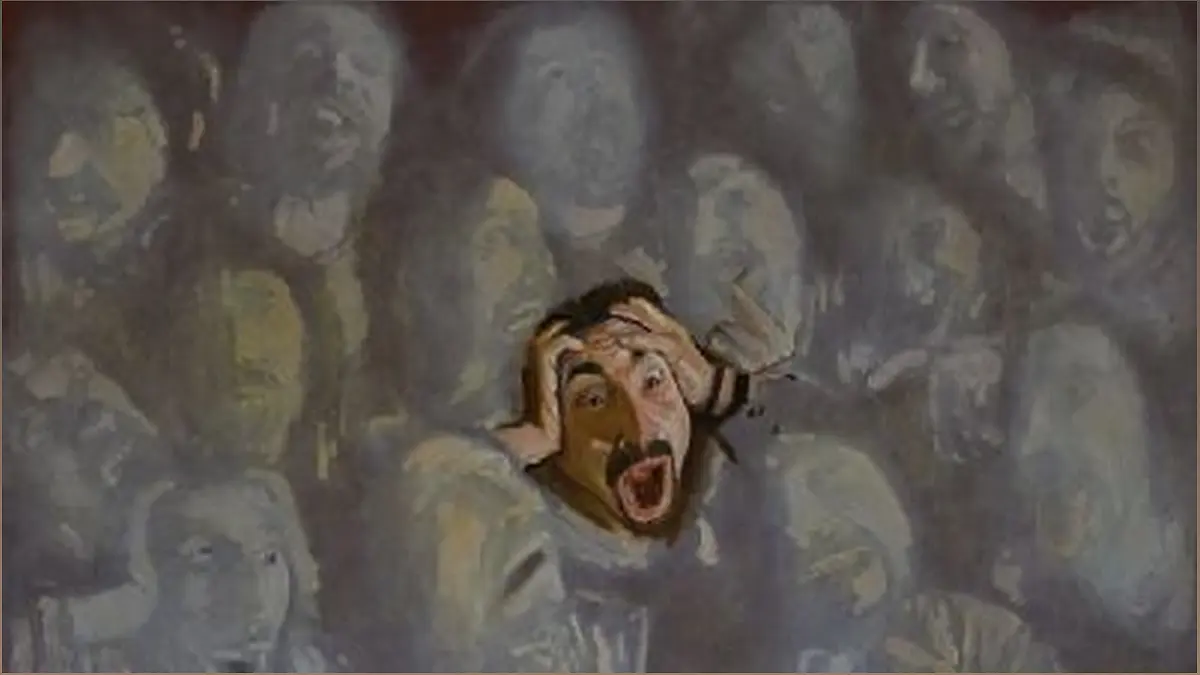Step into the world of Antonio Russo, a talented artist who uses his paintings as a form of self-expression and introspection. With a keen eye for detail and a realistic approach, Russo captures the human experience, particularly his own, with remarkable sensitivity. Join us on a journey through his works as we delve into the themes of self-analysis, emotional depth, and the longing for connection. Get ready to be captivated by the unique blend of realism and theatricality that defines Russo's art.
A Glimpse into Antonio Russo's Artistic Journey
Explore the life and artistic evolution of Antonio Russo
Antonio Russo, born in Lanciano in 1983, is a talented artist who embarked on a remarkable artistic journey at a young age. He began his artistic exploration as a self-taught painter and later pursued formal education at the Academy of Fine Arts in Rome.
Under the guidance of Giuseppe Modica, Russo honed his skills and developed a unique style that blends realism with elements of Baroque and Rococo art. His passion for self-expression and portraiture led him to establish the art collective 'Studio Sotterraneo' in 2010, where he collaborated with fellow painters to push the boundaries of their craft.
Throughout his career, Russo has continuously experimented with different techniques and themes, drawing inspiration from renowned artists such as Caravaggio, Rembrandt, and Vermeer. His dedication to capturing the human experience, particularly his own, is evident in his emotionally charged and introspective paintings.
The Power of Self-Reflection in Russo's Art
Discover how Russo uses his art as a form of self-analysis
Russo's art goes beyond mere representation; it serves as a window into his inner world. Through his paintings, he delves into the complexities of the human psyche, exploring themes of identity, emotions, and the longing for connection.
In his series 'Travaglio,' Russo turns the spotlight on himself, using his own face as a canvas to express his inner turmoil. Each painting in the series represents a different 'Act' in his ongoing self-analysis, offering viewers a glimpse into his restlessness and the universal experience of existential loneliness.
With a meticulous attention to detail and a masterful use of light and shadow, Russo creates a captivating narrative within each artwork. His paintings invite viewers to reflect on their own emotions and experiences, fostering a sense of connection and empathy.
Influences from the Masters: A Fusion of Styles
Explore the artistic influences that shape Russo's unique style
Russo's artistic style is a harmonious fusion of various influences from art history. Drawing inspiration from masters such as Caravaggio, Goya, and Courbet, he incorporates elements of realism, Baroque, and Rococo into his works.
Like Caravaggio, Russo pays meticulous attention to the interplay of light and shadow, creating a dramatic and theatrical atmosphere in his paintings. The influence of Rembrandt can be seen in his ability to capture the intricate details of the human face, conveying a depth of emotion and vulnerability.
By studying the techniques and styles of these great masters, Russo has developed a unique artistic language that combines classical elements with his own introspective approach. The result is a body of work that is both visually striking and emotionally evocative.
Loneliness and Communication: Universal Themes in Russo's Art
Uncover the profound themes of loneliness and communication in Russo's paintings
Russo's art delves into the universal human experience, exploring themes that resonate with audiences on a deep emotional level. Two prominent themes that emerge from his works are loneliness and communication.
In his painting 'Pranzo a San Barnaba' (Lunch at San Barnaba), Russo captures the essence of loneliness through a powerful visual narrative. Depicting himself alone during a simple lunch, he highlights the longing for connection and the limitations imposed by the COVID-19 pandemic. The portrayed characters in his paintings seem to interact and engage, but ultimately remain trapped in their own isolated worlds.
Through his art, Russo prompts viewers to reflect on their own experiences of loneliness and the importance of effective communication in forging meaningful connections with others. His paintings serve as a poignant reminder of the universal longing for understanding and companionship.

